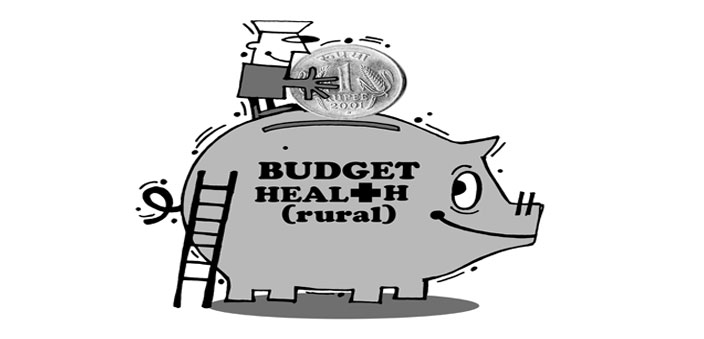Come 1st March, and all of us sit glued to the TV screens, listening with rapt attention to the Finance Minister’s (FM) budget speech and the various fiscal wizards’ analytical views and opinions about the annual budget. Treat the present article as the humble rambling of a surgeon administrator who has been struggling for the past 32 years to take healthcare to the doorsteps of millions of Indians where it is needed most, to them for whom access and availability are major concerns, and for whom ignorance and ill-affordability are the standard norms.
The health nuances in the current Union budget
The much awaited Union budget 2016-17 was presented by the FM Arun Jaitley. The Finance Minister announced that the government would set up 3,000 new drug stores across the country to handle the shortage of drugs, especially in rural areas. He also provided health insurance of up to Rs.1 lakh per family. Another important announcement was about the launch of the National Dialysis Programme to deal with the high costs involved in renal dialysis processes. As part of the programme, every district hospital will have facilities of renal dialysis. Jaitley also added in his budget speech that dialysis equipment will be exempt from customs duty, fully or partially.
The overall Union Budget 2016-17 seems to be aimed at putting more money in the hands of the citizens. Healthcare has finally taken the center stage in the budget, but the issue is, is it enough?
The pros and cons
The Health Protection Scheme of Rs. 1 lakh to cover unforeseen illness in poor families with an additional Rs. 30,000 for senior citizens is a long-awaited and welcome step in deepening access. The provision may not be enough, however, this should also act as a catalyst for investment in healthcare sector and help in improving affordability and accessibility of quality healthcare.
This is all the more important considering that nearly 75% of India population is currently without any health insurance! This will boost health insurance penetration which is currently under 5% and mostly restricted to urban areas, curtail OOP (Out of Pocket) expenses, stimulate industry growth and provide access to those below the poverty line to avail quality healthcare.
Horizontal as well as vertical penetration of health insurance is abysmally poor and inadequate. In addition, the government’s plan to add 3,000 pharmacies under the Jan Aushadhi Yojana to provide generic drugs at affordable rates is a commendable move.
According to the Finance Minister, the National Dialysis Programme will be made available in all district hospitals on a PPP (Public-Private Partnership model). The industry could have a major role to play in this as the programme would be carried out in PPP mode in district hospitals. I welcome this endeavour.
However, I am also concerned, since the government has not addressed the issue of the recent increase in import duty on medical equipment and devices. The medical technology sector is in its infancy with actual manufacturing limited to less complex devices. More than 75% of medical equipment/devices are still imported, and hence the duty increase will result in increase in healthcare cost. The government should also consider exemption of customs duty on critical medical equipment and should come out with positive incentives for healthcare equipment manufacturers under the Make In India scheme.
The healthcare sector was also looking forward to a good response from the government to its recommendations of exempting of healthcare services from GST, increase of tax holiday for establishing healthcare facilities from the current period of five to ten years in non-metros, increase in tax exemption on preventive health checkup, and setting up of a healthcare infrastructure fund, as well as a medical innovation fund.
Shift in focus of public health?
It‘s time to rethink the core and the nucleus of public health care dispensing. With better communication, deeper penetration of mobile telephony in rural sector and improving road conditions, we should now shift our focus from primary health centers (PHCs) to Taluka level cottage hospitals. Upgradation of these hospitals will pay us richer dividends in the years to come. All the governmental schemes can be enrolled through these centers and medical professionals will be able to deliver more meaningful health care through these hospitals. Specialists and super-specialists can conduct visits on a weekly basis and extend better quality care at these centers.
Ambulatory care should become the buzz word in the years to come. That coupled with deeper penetration of telemedicine can help us reach the doorsteps of millions of Indians for whom healthcare has been a distant dream. AYUSH (Department of Ayurveda, Yoga and Naturopathy, Unani, Siddha and Homoeopathy) personnel should be posted in PHCs, Taluka level hospitals as well as utilised for ambulatory care. Enforcement and strengthening of the AYUSH framework, standardisation and quality control of drug formulations, and creation of a vertical chain of drug stores where these low cost drugs can be made available alongside the generic drugs from Allopathy, would go a long way.
This year’s budget takes forward the government’s clear resolve to accelerate the momentum in the health insurance space and make quality healthcare affordable and accessible to all sections of the society. Risks of further global slowdown and turbulence and additional fiscal burden due to the 7th Central Pay Commission, is going to make the actual implementation of all these measures difficult in the coming year. However, at least let a beginning be made, otherwise one may only end up asking, whose health is it anyway?
Dr. Sanjay Oak


 [/column]
[/column]